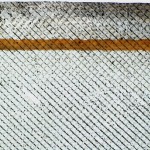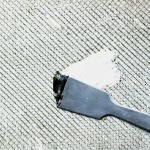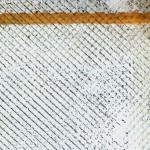Reverse Osmosis fouling (RO fouling) is a phenomenon which affects the performance of a Reverse Osmosis system. Reverse Osmosis membrane filtration techniques are used to purify brackish and sea water, for drinking water production or other specific purposes. Fouling of membranes, however, is the general term to describe the attachment of matter onto the membrane surfaces. RO fouling is recognized as a major problem for membrane operations, because of a decline in finished water productivity, an increase in energy costs and reduced quality of the product water.



RO membrane foulants are classified in the following four categories:
Sparingly Soluble Salts
Dissolved Organic Substances
Colloidal and Particulate Matter
Biological Growth
Causes of Reverse Osmosis Fouling
Scaling occurs when the solubility limit of sparingly soluble salts is reached and precipitates on the membrane surface. Scaling arises in the system where the salt concentrations are the highest, which is typically at the last membrane element. Salts like Silica or those formed by the Cations (Calcium, Barium, and Strontium) and Anions (Carbonate, Sulphate and Phoshate) are commonly found in this kind of fouling. The use of Antiscalents can delay this process and allows higher concentrations of salts making higher water recoveries possible. Dissolved organic substances like humic acids, and poly saccharides adhere to different kind of surfaces and can cover the membrane with gel like structures and affects the membrane performance negatively. This type of fouling is mostly found at the lead membrane elements.
Colloidal and particulate matter is filtered from the feed water stream and forms a solid cake on the surface of the membrane. Clay, sand and other suspended particles are typical in this type of fouling. Additionally, the soluble Iron 2+ and Manganese 2+, commonly present in anaerobic ground waters, can oxidize as soon as oxygen is present into the insoluble form, Iron 3+ and Manganese 3+, which contributes to this type of fouling. This type of fouling also occurs in the first elements of the system.
Biological growth is a complex mechanism that leads to fouling over time. First, there is adherence of bacteria to the membrane surface and dead zone areas in the membrane element, like the feed spacer. The bacteria then begins to grow on the membrane surface from the nutrients in the passing water, while simultaneously, new bacteria adheres to the same surface. At this point, the bacteria begin to multiply and form bacteria colonies. The bacteria will subsequently produce a gel like structure called Extracellular Poly Saccharides (EPS) that can block the feed channel and pores of the membrane, hence affecting a decrease in the membrane performance. The time in which this type of fouling develops is influenced by bacteria population, temperature and nutrient concentration. Unless for very specific, rarely found reasons, biological fouling is mostly located in the leading front elements of the installation.
Reverse Osmosis Fouling Solutions
Fouling can be prevented by seeking expert professional advice combined with proper pretreatment, flocculation, filtration and/or the implementation of a biocidal treatment program. Normally, installations should receive preventive cleaning regularly to prevent the reverse osmosis systems from fouling and to guarantee an optimal performance.
